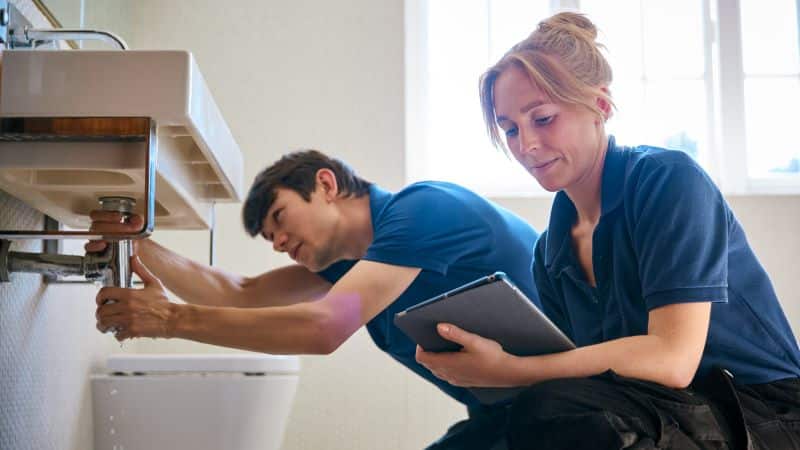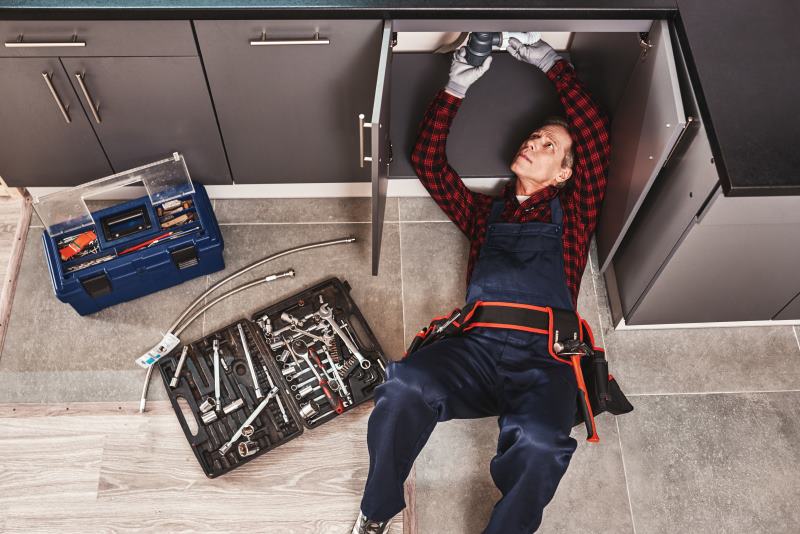Moving into a new home is an exciting milestone. From choosing paint colors to planning your furniture layout, there’s a lot to look forward to. But amid the excitement, there’s one crucial step many homebuyers overlook — a comprehensive plumbing inspection.
Skipping a detailed checkup of your new home’s plumbing system can lead to unpleasant (and expensive) surprises down the road. From hidden leaks to outdated piping, plumbing issues are among the top culprits of costly home repairs. The good news? A thorough inspection before you move in can help you avoid financial headaches and protect your investment.
Why Plumbing Inspections Matter Before You Move In
Most homebuyers rely on general home inspections to catch potential problems, but these often provide only a surface-level overview. Plumbing systems, which are largely hidden behind walls and underground, require specialized tools and expertise to evaluate thoroughly.
Here’s what can go wrong if you skip this step:
- Undetected leaks can lead to mold growth and water damage.
- Old pipes may be corroded or made of materials that no longer meet code.
- Improper drainage and sewage issues can cause backups and bad odors.
- Water heater failures can result in flooding or inadequate hot water supply.
- Low water pressure might indicate deeper plumbing blockages.
All of these issues can quickly translate into thousands of dollars in repairs if not caught early.
What a Professional Plumbing Inspection Covers
Hiring a certified plumbing professional ensures that your home’s system is examined with precision. Here are key areas typically covered during a pre-move-in plumbing inspection:
1. Water Pressure and Flow
Testing water pressure helps identify blockages or pipe corrosion that can affect performance. A pressure that’s too high may even damage fixtures and appliances.
2. Pipe Condition and Material
Inspectors check for leaks, corrosion, and the type of piping used. Homes built before the 1980s may still have galvanized or lead pipes, which can affect water quality and safety.
3. Drainage System
A full drain inspection ensures wastewater flows freely and efficiently. This includes sinks, bathtubs, toilets, and exterior drains.
4. Sewer Line Inspection
This critical step involves sending a camera into the sewer line to detect clogs, tree root intrusion, or cracks. Sewer line repairs can cost upwards of $5,000 — better to catch problems early.
5. Water Heater Assessment
The inspector will check the age, capacity, safety features, and performance of the water heater to ensure it’s functioning properly and efficiently.
6. Fixture and Appliance Inspection
Plumbing fixtures like toilets, faucets, and showers are checked for leaks, wear and tear, and proper installation. Connections to appliances like dishwashers and washing machines are also reviewed.
How a Plumbing Inspection Saves You Money
While a plumbing inspection may cost a few hundred dollars, the potential savings are significant. Here’s how:
- Preventative savings: Fixing a small leak now could save you from structural water damage later.
- Negotiation leverage: If issues are found, you can request that the seller handle repairs or adjust the sale price.
- Insurance advantages: A clean bill of health from a plumbing inspection can sometimes help lower homeowners insurance premiums.
Don’t DIY: Why You Need a Professional
While you might be tempted to run a few faucets and call it a day, a true plumbing inspection goes beyond the basics. It’s essential to bring in a trusted professional who knows what to look for and has the right tools to identify hidden issues.
For thorough, dependable plumbing inspections, consider working with a team of experts who specialize in residential systems. One such service provider is this trusted plumbing inspection company that offers detailed evaluations to ensure your home’s plumbing is safe, up-to-date, and efficient.
Final Thoughts
A new home is one of the biggest investments you’ll ever make — don’t let plumbing problems drain your wallet. By scheduling a detailed inspection before you move in, you protect your family’s comfort and your home’s value.
Plumbing inspections may not be glamorous, but they’re one of the smartest moves you can make as a new homeowner.


